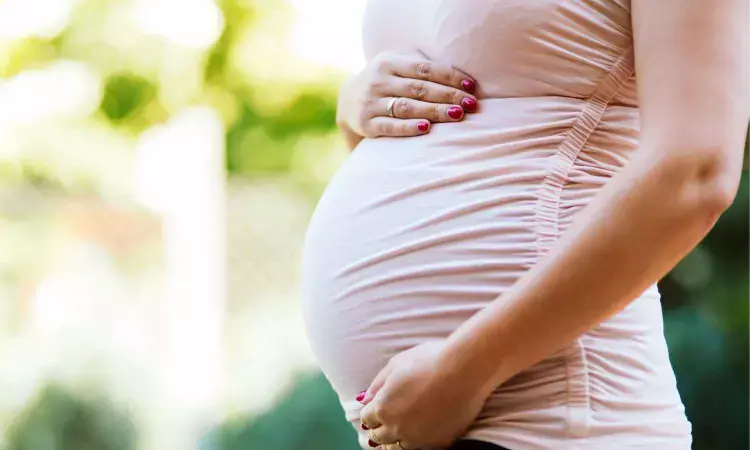- Home
- Medical news & Guidelines
- Anesthesiology
- Cardiology and CTVS
- Critical Care
- Dentistry
- Dermatology
- Diabetes and Endocrinology
- ENT
- Gastroenterology
- Medicine
- Nephrology
- Neurology
- Obstretics-Gynaecology
- Oncology
- Ophthalmology
- Orthopaedics
- Pediatrics-Neonatology
- Psychiatry
- Pulmonology
- Radiology
- Surgery
- Urology
- Laboratory Medicine
- Diet
- Nursing
- Paramedical
- Physiotherapy
- Health news
- Fact Check
- Bone Health Fact Check
- Brain Health Fact Check
- Cancer Related Fact Check
- Child Care Fact Check
- Dental and oral health fact check
- Diabetes and metabolic health fact check
- Diet and Nutrition Fact Check
- Eye and ENT Care Fact Check
- Fitness fact check
- Gut health fact check
- Heart health fact check
- Kidney health fact check
- Medical education fact check
- Men's health fact check
- Respiratory fact check
- Skin and hair care fact check
- Vaccine and Immunization fact check
- Women's health fact check
- AYUSH
- State News
- Andaman and Nicobar Islands
- Andhra Pradesh
- Arunachal Pradesh
- Assam
- Bihar
- Chandigarh
- Chattisgarh
- Dadra and Nagar Haveli
- Daman and Diu
- Delhi
- Goa
- Gujarat
- Haryana
- Himachal Pradesh
- Jammu & Kashmir
- Jharkhand
- Karnataka
- Kerala
- Ladakh
- Lakshadweep
- Madhya Pradesh
- Maharashtra
- Manipur
- Meghalaya
- Mizoram
- Nagaland
- Odisha
- Puducherry
- Punjab
- Rajasthan
- Sikkim
- Tamil Nadu
- Telangana
- Tripura
- Uttar Pradesh
- Uttrakhand
- West Bengal
- Medical Education
- Industry
Pregnancy and Calcium: Study suggests how to Tackle Silent Issue of Hypocalcemia during pregnancy

Maternal hypocalcemia is a significant healthcare issue characterized by low serum calcium levels during pregnancy. This condition is largely influenced by the physiological demands of pregnancy and inadequate dietary calcium intake, particularly prevalent in African nations with socio-economic challenges. The global prevalence of hypocalcemia among pregnant women ranges from 25.5% to 70.6%, with higher instances noted in developing regions. Recent study conducted at Bugando Medical Centre in Mwanza, Tanzania, aimed to ascertain the prevalence of hypocalcemia among pregnant women and identify its key predictors within this demographic.
Physiological Demands for Calcium During Pregnancy
The introduction emphasizes how physiological changes during pregnancy create an increased need for calcium—approximately 300-350 mg per day for fetal bone development—while dietary deficiencies contribute to the risk of maternal hypocalcemia. The importance of adequate maternal calcium levels is underscored; lower levels can trigger physiological responses that may lead to complications such as preeclampsia. The methodology adopted for this study was a cross-sectional design executed from June 2022 to January 2023. Pregnant women with a gestational age of 20 weeks or more were eligible to participate if they provided consent. The sampling involved a calculated size of 382 participants, accounting for potential non-responses. Data were collected through a standardized questionnaire and blood samples were drawn for serum calcium measurement.
Findings on Prevalence and Predictors of Hypocalcemia
Notably, the study found a 23.2% prevalence of hypocalcemia among the 651 pregnant women analyzed. This prevalence is lower than figures reported in several other studies from different regions, possibly due to better access to calcium-rich dietary sources in Tanzania. The study identified several predictors significantly associated with maternal hypocalcemia, including multiple pregnancies, insufficient calcium supplementation, fewer than four antenatal care (ANC) visits, prior history of preeclampsia, and residence in rural areas.
Impact of Multiple Pregnancies and ANC Visits
Multiple pregnancies were linked to a heightened risk of hypocalcemia, attributed to the increased maternal calcium demand. The absence of routine calcium supplementation during ANC visits was found to directly contribute to lower calcium levels, reinforcing that diet alone might be inadequate—especially for populations prone to nutritional deficiencies. Similarly, low frequency of ANC visits correlated with higher hypocalcemia risk, emphasizing ANC's role in nutritional education and health monitoring.
Historical and Socio-economic Factors Affecting Calcium Levels
Additionally, women with a previous history of preeclampsia displayed challenges in maintaining normal calcium levels in subsequent pregnancies, likely due to persistent physiological effects from earlier pregnancies. Rural residence emerged as a significant risk factor, likely due to limited access to education and healthcare resources, along with poor dietary practices influenced by socio-economic constraints.
Unexpected Findings Regarding Gestational Age
Interestingly, the study indicated that gestational age in the third trimester did not align with the anticipated increase in hypocalcemia risk, suggesting potential influences from the participants’ socio-economic backgrounds and nutritional statuses that could affect calcium levels independently of pregnancy progression.
Study Limitations and Recommendations
Limitations include the study's focus on patients attending a tertiary hospital, which may limit the generalizability of findings. The study concludes that approximately one in five pregnant women at the facility experienced hypocalcemia. Recommendations entail routine hypocalcemia screening, implementation of regular calcium supplementation during ANC visits, and enhancing nutritional education focused on calcium-rich food sources as vital strategies to mitigate risk and improve maternal and fetal health outcomes.
Reference –
Godluck H Mlay et al. (2025). Predictors Of Maternal Hypocalcemia Among Pregnant Women Attending At A Tertiary Referral Hospital In Tanzania: A Cross-Sectional Study. *BMC Pregnancy And Childbirth*, 25. https://doi.org/10.1186/s12884-025-07536-w.
Dr Kamal Kant Kohli-MBBS, DTCD- a chest specialist with more than 30 years of practice and a flair for writing clinical articles, Dr Kamal Kant Kohli joined Medical Dialogues as a Chief Editor of Medical News. Besides writing articles, as an editor, he proofreads and verifies all the medical content published on Medical Dialogues including those coming from journals, studies,medical conferences,guidelines etc. Email: drkohli@medicaldialogues.in. Contact no. 011-43720751


